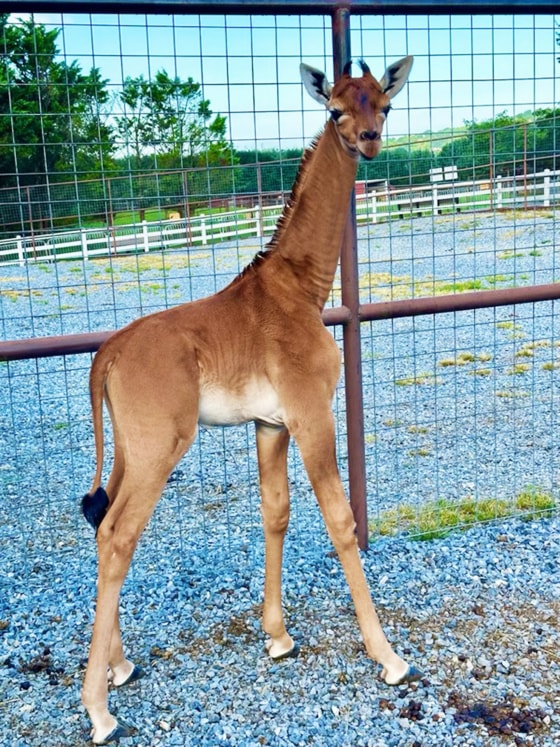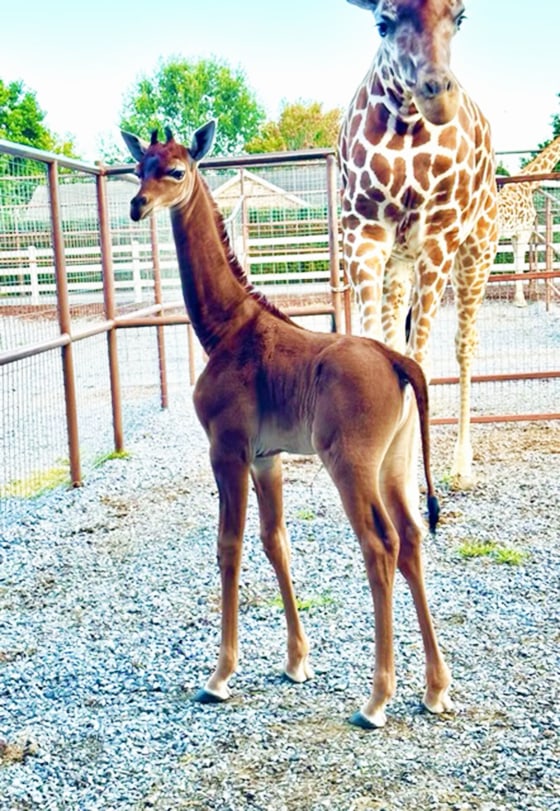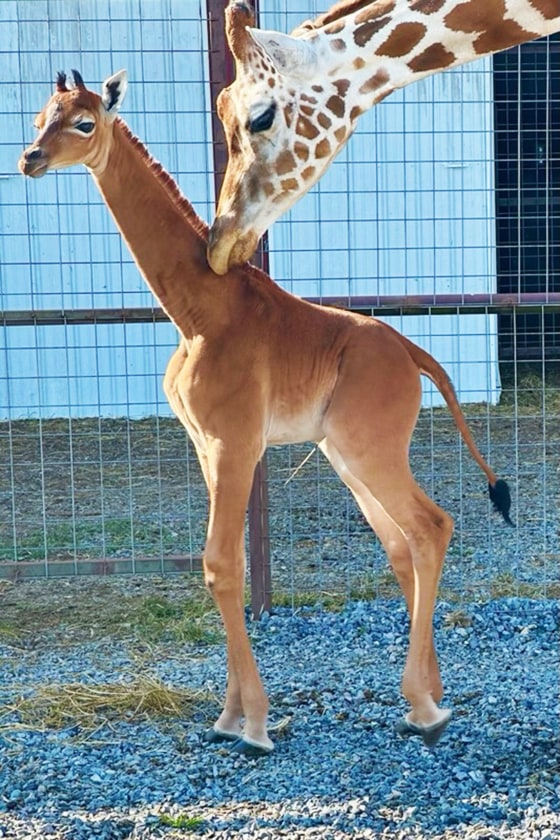
A baby giraffe was born without spots last month.
According to Brights Zoo, where the giraffe was born, she is the only known only solid-colored reticulated giraffe in the world.
Reticulated giraffes are a subspecies of giraffes.
Giraffe Conservation Foundation — an NGO that concentrates on the conservation and care of giraffes in the wild — did not immediately respond to TODAY.com’s request to confirm this statement.

Brights Zoo, located in Washington County, Tennessee, is a USDA-licensed, private institution accredited by the Zoological Association of America (ZAA).
The zoo says that the solid brown giraffe, born on July 31, already stands 6 feet tall.
“Giraffe experts believe she is the only solid-colored reticulated giraffe living anywhere on the planet,” a press release shared with TODAY.com via email reads.
The zoo is currently seeking help from the public in finding a name for the baby giraffe and will start its contest on its Facebook page on Aug. 22. So far, the zoo says it has narrowed down a list of suggestions to the names Kipekee, the Swahili word for unique, Firyali, which means unusual or extraordinary, Shakiri which means “she is most beautiful” and Jamella, “one of great beauty.”

“This special giraffe’s birth is remarkable for many reasons, but maybe most importantly, it will help bring attention to the serious challenges the rest of her species face in the wild,” the press release continued.
“The international coverage of our patternless baby giraffe has created a much-needed spotlight on giraffe conservation. Wild populations are silently slipping into extinction, with 40% of the wild giraffe population lost in just the last 3 decades,” the founder of Bright’s Zoo, Tony Bright, said in the release.
Video from the WPA Film Library captured in 1967 shows a spotless giraffe at a zoo in Tokyo, Japan.

In the wild, a giraffe’s coat is a form of camouflage, according to a 2018 research article published by the peer-reviewed journal Zoological Science.
The article’s researchers analyzed the complex coat pattern traits of a subspecies of wild giraffes called Masai giraffes, native to East Africa. They found that the giraffes’ spots are “likely to be heritable” or transmissible from parent to offspring. According to the researchers, giraffes with larger spots and those with “irregularly shaped or rounder spots” might have greater chances of survival in the wild.
The spotted coat pattern of a giraffe provides more than just cover.
The Giraffe Conservation Foundation says that each spot, or patch, has a system of blood vessels beneath the area that acts as a thermal window and allows the release of body heat.
In 2017, nearly 1.2 million people tuned into the live stream of a giraffe known as April the Giraffe while she gave birth. The reticulated giraffe gained international attention after her zoo residence in Harpursville, New York, set up a video stream of her in late pregnancy. She was euthanized in 2021 at the age of 20 as she dealt with advancing arthritis.
This story first appeared on TODAY.com. More From TODAY:



